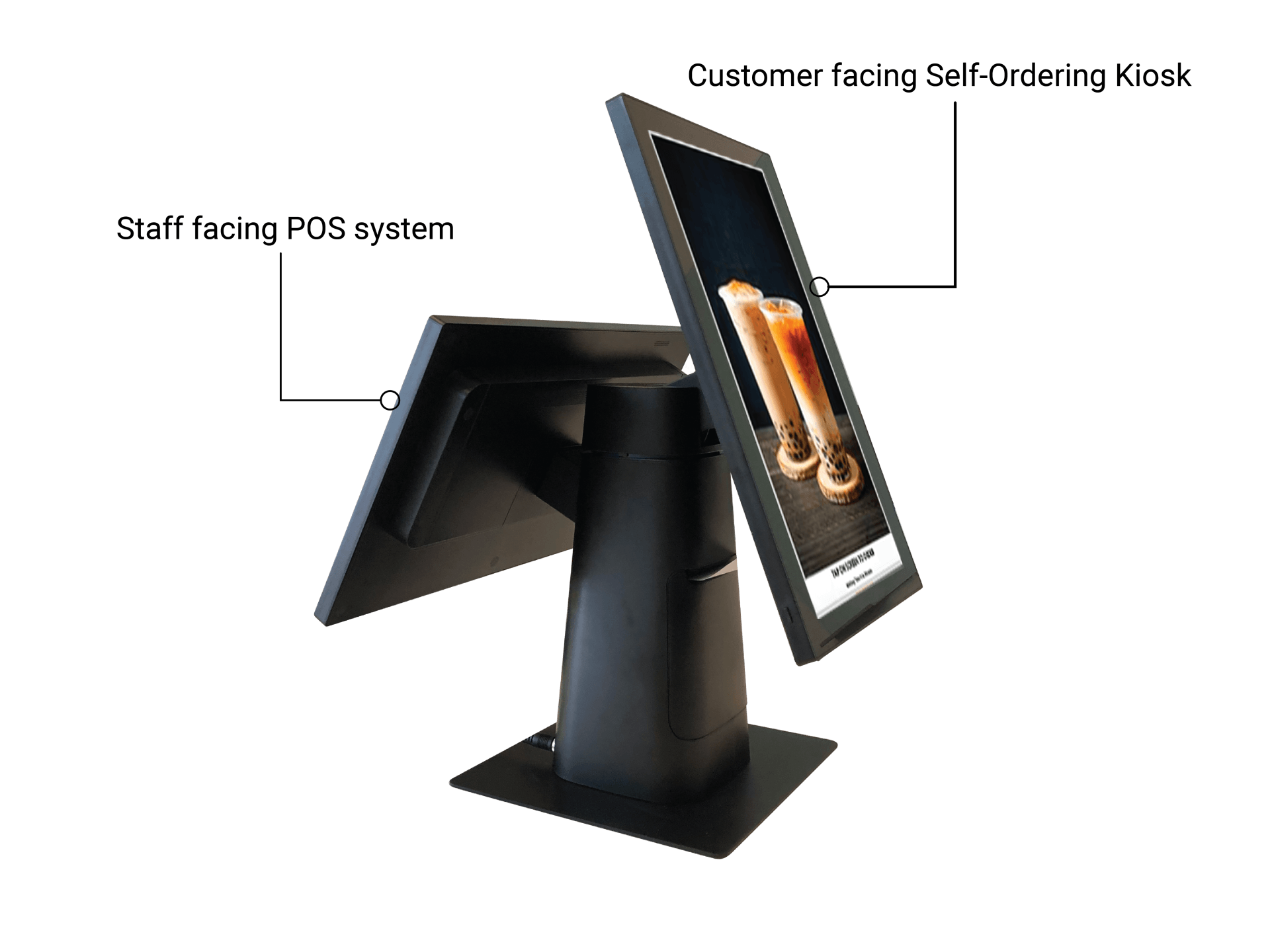
iMakan’s hybrid self-ordering kiosk is one of the latest product developments by iMakan. It was developed to match the needs of many F&B businesses, especially those that are operating on quick service, pay first dine later flow.
What is iMakan Hybrid?
iMakan Hybrid is a dual touch screen solution that combines a cloud POS system together with a self-ordering kiosk and fits on your F&B countertop.
What are the benefits of iMakan Hybrid?
- Solves manpower challenges
- Accurate order taking
- Increases average bill sizes
- Centralizes order management
- Centralizes menu management
Solves manpower challenges
High manpower cost and generally low demand for F&B related jobs in Singapore contribute to manpower challenges that are commonly faced by the F&B industry. With iMakan Hybrid, your customers can self order through the self ordering kiosk screen.
This reduces the dependence on staff for order taking. Your existing staff can be reassigned to help with order management and food preparation to speed up service time and capitalize on peak hours.
Accurate order taking
By allowing your customers to self-order through the self-ordering kiosk, you let your customers take charge of their orders. When their orders are placed, it is digitally sent to your POS system which fires the order to the kitchen display or printers.
This eliminates the chance of miscommunication or human error.
Increases average bill sizes
The customer facing self ordering kiosk automatically prompt add on suggestion that you can configure to upsell to your customers. This helps you or your staff to capitalize on every opportunity to upsell.
Centralizes order management
The staff facing POS system forms the centre of operations. It helps to centralize order and menu management from multiple ordering channels for example, QR ordering, self-ordering kiosks, and GrabFood.
This allows for a seamless operation flow by linking up front of house operations (ordering) to back of house operations (food preparation). On top of that, menu management across all digital platforms are also simplified through one platform.
Centralizes menu management
Apart from centralizing menu management, order management can also be centralized through an online portal. This makes it easier for you to manage your self-ordering kiosk, QR ordering and GrabFood menus.
iMakan’s online portal is easy to manage even if you have different prices for GrabFood and in-store self-ordering menus.
Getting a iMakan Hybrid
If you are interested in iMakan Hybrid self ordering kiosk, click here to speak with our solution consultants today!











